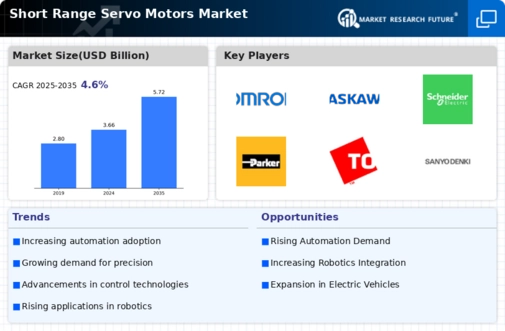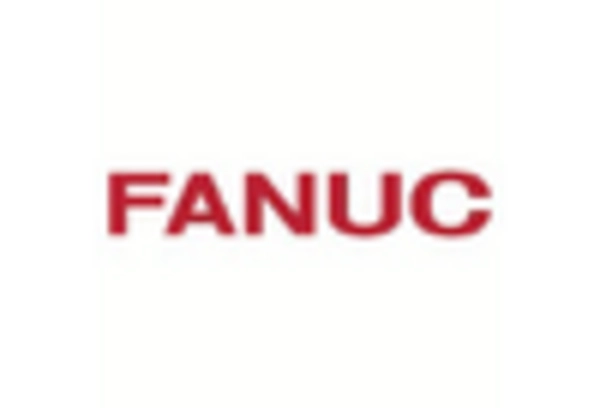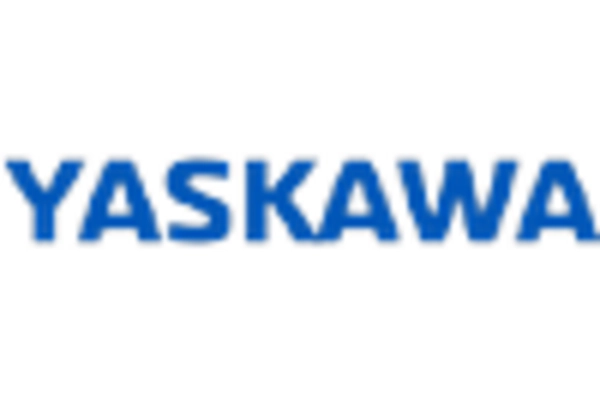Rising Demand for Precision Control
The Short Range Servo Motors Market is experiencing a notable increase in demand for precision control across various applications. Industries such as robotics, aerospace, and manufacturing are increasingly relying on servo motors to achieve high levels of accuracy in their operations. This trend is driven by the need for enhanced performance and reliability in automated systems. According to recent data, the market for precision control systems is projected to grow significantly, with servo motors playing a crucial role in this expansion. As companies seek to improve their operational efficiency, the adoption of short range servo motors is likely to rise, further propelling the market forward.
Increased Focus on Energy Efficiency
The Short Range Servo Motors Market is also being driven by an increased focus on energy efficiency. As industries and consumers alike become more environmentally conscious, the demand for energy-efficient solutions is rising. Short range servo motors are designed to consume less power while delivering high performance, making them an attractive option for various applications. Data suggests that energy-efficient motors can lead to significant cost savings over time, which is appealing to manufacturers and end-users. This growing emphasis on sustainability is likely to propel the adoption of short range servo motors, thereby positively impacting the market.
Advancements in Robotics and Automation
The Short Range Servo Motors Market is significantly influenced by advancements in robotics and automation technologies. As industries strive to enhance productivity and reduce labor costs, the integration of servo motors in robotic systems has become increasingly prevalent. These motors provide the necessary torque and speed for precise movements, making them ideal for applications in assembly lines and automated machinery. Market data indicates that the robotics sector is expected to witness substantial growth, which will, in turn, drive the demand for short range servo motors. This synergy between robotics and servo technology suggests a promising outlook for the market.
Technological Innovations and Customization
The Short Range Servo Motors Market is benefiting from ongoing technological innovations and the ability to customize solutions. Manufacturers are increasingly developing advanced servo motors that offer enhanced features such as improved torque, speed, and control capabilities. This innovation allows for tailored solutions that meet specific industry requirements, thereby expanding the potential applications of short range servo motors. Market trends indicate that customization is becoming a key factor in purchasing decisions, as companies seek motors that align with their unique operational needs. This trend towards innovation and customization is expected to drive growth in the short range servo motors market.
Growing Applications in Consumer Electronics
The Short Range Servo Motors Market is witnessing a surge in applications within the consumer electronics sector. With the proliferation of smart devices and automation in home appliances, the demand for compact and efficient servo motors is on the rise. These motors are utilized in various consumer products, including cameras, drones, and smart home devices, where precise control is essential. Market analysis reveals that the consumer electronics segment is projected to expand, thereby increasing the need for short range servo motors. This trend indicates a shift towards more sophisticated and automated consumer products, further enhancing the market's growth potential.

















Leave a Comment